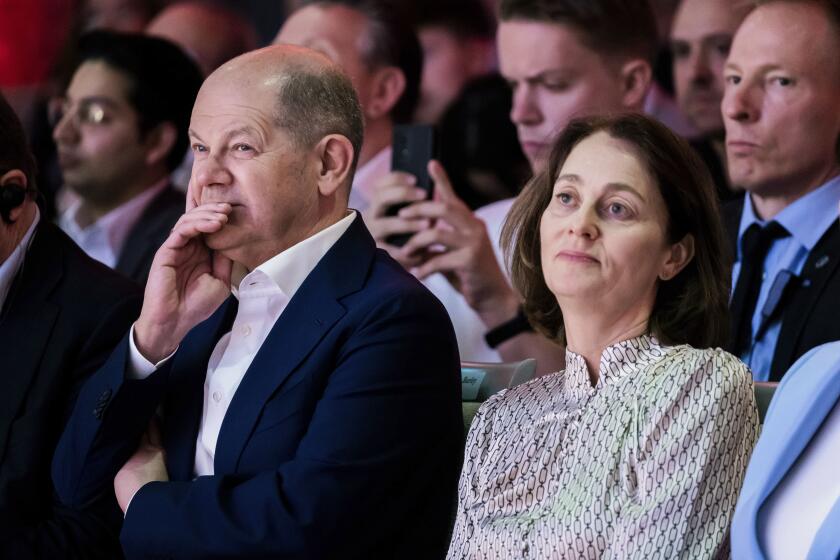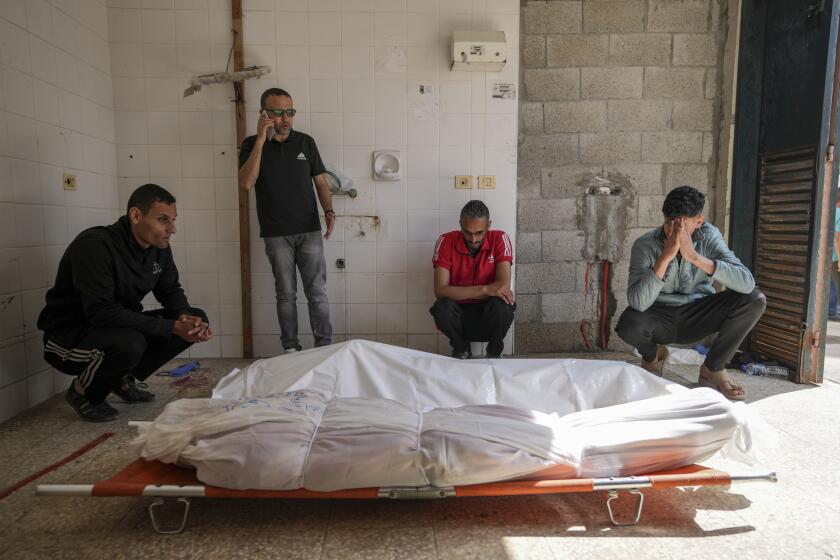Jockeys’ patches benefit charities
BALTIMORE -- Active jockeys have found a new way to help their less fortunate brethren and horse racing in general.
The 12 who rode in the Preakness wore advertising patches because of a sponsorship deal with NetJets, a private air travel company, and were each paid $7,500, with that money going to racing charities.
It’s all part of a Triple Crown initiative that began with the Kentucky Derby and also involves the Jockeys’ Guild, the Thoroughbred Owners and Breeders Assn. and the Triple Crown racetracks.
The Derby Day promotion raised $500,000 for the Permanently Disabled Jockeys Fund, and a check was presented to disabled jockey Jackie Fires by jockey John Velasquez here Friday.
The 20 jockeys who rode in the Kentucky Derby were each paid $10,000 for wearing the patch, which raised $200,000 for the cause. NetJets donated another $100,000, and Richard Santulli, the company’s chairman, donated $100,000 of his own money, as did Bill Casner, horse owner and chairman of the owners and breeders group.
The money raised at the Preakness will go to the Jockey Club Foundation, which provides assistance to needy members, and the Grayson-Jockey Research Foundation, which seeks research to improve the soundness of horses.
------
Big Brown’s jockey, Kent Desormeaux, wore two advertising patches Saturday. Besides the one for charity, he also wore a UPS patch. An unprecedented marketing agreement between Big Brown’s owners and the giant delivery company was reached the week after the Derby.
The deal was announced May 9, but no details were provided. Big Brown’s original owner, Brooklyn trucking executive Paul Pompa Jr., picked the name because of a working relationship with UPS, which uses “Big Brown” and “Brown” in its advertising campaigns.
------
A People for the Ethical Treatment of Animals demonstration, stemming from the breakdown and death of Eight Belles after the Kentucky Derby, was held near the entrance to media parking and consisted of about 20 people holding signs. One sign said: “Wanna Bet Another Horse Dies today?”
--
Staff writer Bill Dwyre contributed to this report.
More to Read
Start your day right
Sign up for Essential California for news, features and recommendations from the L.A. Times and beyond in your inbox six days a week.
You may occasionally receive promotional content from the Los Angeles Times.






